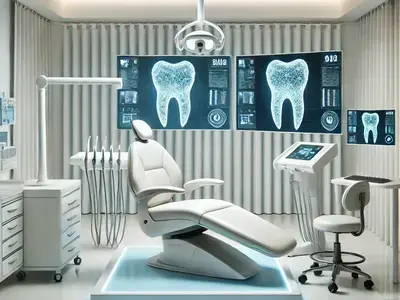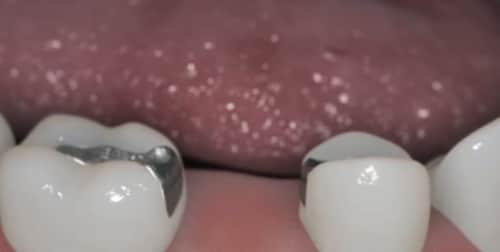Dental technology is evolving, and if you haven’t heard about AI-powered dental diagnostics yet, it’s time to catch up. With a combination of machine learning, advanced imaging techniques, and a surge in data-driven insights, AI is stepping into the dental world to transform how patients and dentists alike approach oral health. But what exactly makes AI so powerful in this context, and how is it changing the game for both prevention and treatment? Let’s dive in.
Why AI? The Imperfections of Human Diagnoses
It’s no secret that traditional dental diagnostics often come with an element of human error. Even the most experienced dentist can miss early signs of decay or misinterpret a radiograph. Studies show that up to 20% of cavities go undetected in traditional dental X-rays reviewed by dentists alone. Human eyesight has limitations, and while dental professionals do an incredible job, adding an AI layer to diagnostics can bring a level of consistency and accuracy that is difficult to match.
An AI-powered diagnostic tool, for example, can detect caries at a very early stage by comparing radiographs with a database of over 100,000 known cases. Unlike human dentists, AI does not suffer from fatigue or inconsistency after a long day—it can repeatedly apply the same rigorous standards to every patient, leading to higher rates of detection.
AI Technologies and Their Application in Dentistry
Machine Learning Algorithms: Machine learning, a type of artificial intelligence, is employed to analyze dental images. Algorithms are trained using thousands of images to detect not only cavities but also more complex issues like fractures, periodontal disease, and even early signs of oral cancers. Recent studies have shown that AI-driven diagnostic tools have an accuracy rate of 95-98% when identifying dental decay, compared to an average of 70-80% by human dentists.
CBCT and 3D Imaging: Cone Beam Computed Tomography (CBCT) combined with AI is becoming a powerful diagnostic tool. AI can analyze CBCT scans in three dimensions, providing a more comprehensive view of the patient’s oral health. A recent clinical trial found that using AI alongside CBCT helped detect periodontal bone loss 40% faster than traditional 2D X-rays.
AI in Orthodontics: Orthodontics is another area seeing massive change. AI can simulate tooth movements and even predict outcomes of orthodontic treatment plans. By analyzing data from thousands of patients, AI helps create highly personalized treatment options, reducing the chances of unwanted surprises and shortening treatment times.
| AI Application | Field | Improvement Achieved |
|---|---|---|
| Caries Detection | General Dentistry | 20-30% more accuracy |
| Periodontal Disease | Periodontics | 40% faster diagnosis |
| Orthodontic Planning | Orthodontics | Personalized treatment plans |
Current Trends: Adoption Rates and Patient Acceptance
The adoption of AI in dentistry is on the rise, particularly in North America and Europe. A 2023 survey of dental practices revealed that 32% of clinics in the U.S. have started implementing some form of AI diagnostics. The same survey indicated that 78% of dentists who use AI tools feel more confident in their diagnoses. This confidence translates directly into patient care, with 67% of patients reporting higher satisfaction levels when AI-powered diagnostics were used during their dental visits.
AI is also improving patient education. In many practices, AI-generated visualizations are used to explain dental problems more clearly to patients. Imagine being able to see an image of your tooth where areas of concern are highlighted in vivid detail. Dr. Michael Turner, a practicing dentist in Boston, shares that “patients appreciate AI tools because it takes away the guesswork. When they see a color-coded image of their own teeth, it’s much easier for them to understand why treatment is needed.”
Addressing Concerns: Misconceptions and Ethical Considerations
With every technological advancement come concerns and misconceptions. One of the common misconceptions about AI in dentistry is the fear that AI will replace dentists. This fear is unfounded. Dr. Julia Evans, an AI researcher, explains, “AI in dentistry is an assistive technology, not a replacement. Dentists are irreplaceable when it comes to patient care, empathy, and decision-making that involves nuances beyond data.” The real aim of AI is to enhance accuracy, efficiency, and consistency—not to take away human jobs.
There are also ethical questions about data privacy and the handling of patient information. AI systems rely on large datasets to function effectively. Ensuring that patient data is used ethically and remains secure is paramount. This has led to the development of strict regulations and protocols for using AI in healthcare, ensuring that patient data is anonymized and protected at every stage.
Costs and Accessibility: Is AI Dentistry for Everyone?
The cost of implementing AI technology in dental practices is a significant consideration. Initial setup costs for AI-powered diagnostic systems can range between $15,000 and $50,000, depending on the sophistication of the tools and software used. This means that, at least for now, AI diagnostics are more common in mid to large-sized dental practices and urban clinics, where the return on investment is more feasible.
For patients, the cost implications vary. AI-powered dental assessments can cost anywhere from $100 to $300 per session. While this may seem steep, many patients see it as a worthy investment for the added accuracy and peace of mind. And as the technology becomes more widespread, costs are expected to drop, making AI diagnostics accessible to a broader population.
Advice from Our Editorial Team
AI-powered dental diagnostics are already making a noticeable difference in the field of oral health. From early detection of cavities to personalized orthodontic planning, the potential benefits are huge. But remember, technology is a tool, and its value ultimately depends on the person using it. If you’re considering visiting a dental practice with AI capabilities, make sure you understand how it fits into your overall care. Use the increased transparency AI provides to ask better questions and get more involved in your treatment journey. Stay proactive about your health—technology is here to help, but it’s your well-being at the center of it all.






